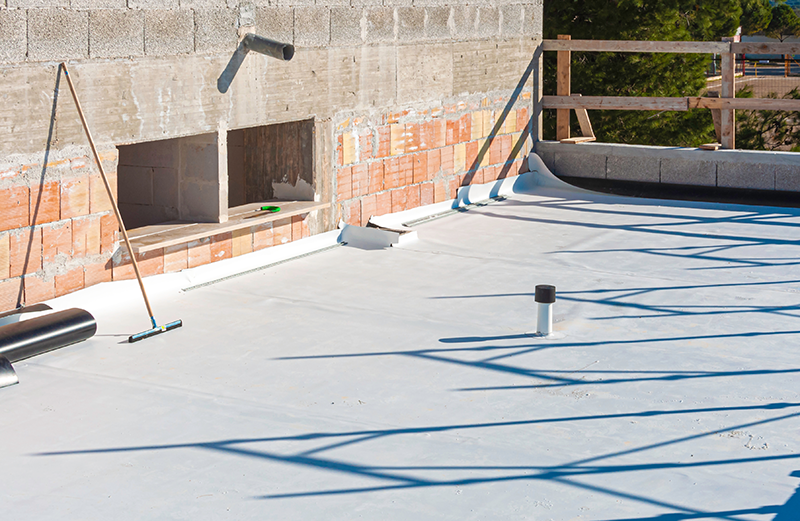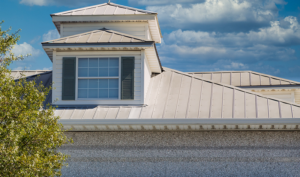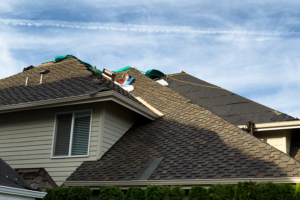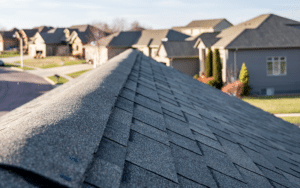Unraveling Polyvinyl Chloride: The Cornerstone of Modern Roofing
Polyvinyl Chloride, or PVC, is a synthetic plastic polymer that has carved out a niche across multiple industries, with a noteworthy impact on roofing technology. PVC roofing has surged in popularity thanks to a medley of distinctive features and benefits.
Advantages of Polyvinyl Chloride in Roofing Technology
1. Performance Longevity & Durability: PVC roofing is synonymous with outstanding longevity and durability. It withstands cracking, peeling, and discoloration, rendering it the go-to choice for roofing projects prioritizing long-term performance.
2. Water Resistance: Standing tall against water intrusion, the superior waterproofing properties of PVC keep buildings dry. With its inherent resilience against extreme weather, PVC strengthens the roofing system’s watertight capabilities.
3. Energy Efficiency: The reflective nature of Polyvinyl Chloride roofing plays a crucial role in minimizing heat absorption by reflecting solar rays. It translates into reduced energy costs, thus contributing to a more energy-efficient building.
4. Low Maintenance Needs: Minimal upkeep is another quintessential benefit, making the lifetime cost of a PVC roof quite affordable. Regular check-ups and occasional cleaning are usually enough to preserve the roofing system’s integrity.
5. Fire Safety: PVC roofing materials are intrinsically fire resistant. Their flame-retardant capability and resilience against heat offer an additional safety layer to buildings.
Drawbacks of Polyvinyl Chloride Roofing: A Necessary Consideration
1. Cost Implication: Initial investment for PVC roofing can be higher than other alternatives. However, the cost balances out in the long run, given Polyvinyl Chloride roofing’s long lifespan and minimal maintenance demands.
2. Installation Requirements: Proper installation is essential for optimizing roof life and performance. Missteps in installation can compromise the roof’s integrity, leading to leaks and a shortened lifespan.
3. Limited Palette: PVC roofing exhibits a narrow color spectrum, which may not align with all architectural aesthetics or personal preferences.
4. Environmental Concerns: The production and disposal of PVC, involving chlorine, have environmental implications due to potential chemical byproduct releases.
Tracing Back the Legacy of PVC Roofing
While PVC’s discovery dates back to the 19th century, it was in the 1960s that it made its mark in commercial roofing. Eventually, technological advancements and the evolution of PVC roofing membranes triggered its widespread endorsement in the construction sector.
The Price Tag of PVC Roofing
Pricing for Polyvinyl Chloride roofing hinges on multiple factors, including roof dimensions, material quality, and installation intricacy. Typically, including installation, PVC roofing may cost from $6 to $9 per square foot.
Weather Dynamics: PVC Roofing Stands the Test
A champion of all weather conditions, PVC roofing promises flexibility and resistance against extremes of temperatures, defying brittleness and cracking. It additionally offers UV resistance, which stops degradation and color fading.
In colder climates, Polyvinyl Chloride roofing stays pliant and sidesteps freeze-thaw damage. In hail-prone areas, PVC’s robustness helps it weather the storm.
Environmental Aspects of PVC Roofing: A Debate Continues
Despite its undeniable advantages, the environmental impact of PVC roofing is under scrutiny. Advances in manufacturing have ameliorated the eco-impact by reducing the associated emissions. Recycling options exist for PVC roofing, though less prevalent than other materials like metal or asphalt. Thus, eco-conscious disposal and recycling are pivotal to minimizing the environmental footprint of PVC roofing.
PVC roofing, endowed with its string of benefits like durability, water resistance, and energy efficiency, presents a compelling choice. But it’s equally important to weigh its disadvantages—costly initial investment and eco-concerns—to make a well-rounded, informed decision about its utilization in building projects.
Lastly, remember that the polyvalency of PVC allows it to mold into an adaptable roofing material resistant to climatic adversities, lending it an exceptional lifespan. Yet, the PVC path has a few roadblocks, like potential environmental impact and aesthetic limitations. Thus, while PVC undeniably packs a powerful punch in roofing technology, it’s prudent for project-specific considerations to weigh in on the final decision.
Contact Blue Nail Roofing for a free roofing estimate today!







